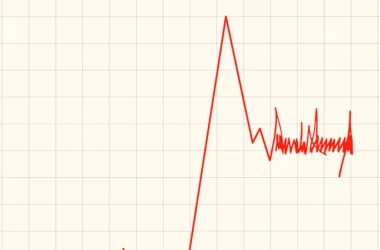Greater than two years after the Federal Reserve began lifting rates of interest to restrain development and weigh on inflation, companies proceed to rent, customers proceed to spend and policymakers are questioning why their will increase haven’t had a extra aggressive chunk.
The reply in all probability lies partly in a easy actuality: Excessive rates of interest should not actually pinching People who personal belongings like homes and shares as a lot as many economists may need anticipated.
Some folks clearly are feeling the squeeze of Fed coverage. Bank card charges have skyrocketed, and rising delinquencies on auto loans recommend that individuals with decrease incomes are struggling underneath their weight.
However for many individuals in center and higher earnings teams — particularly those that personal their houses outright or who locked in low cost mortgages when charges have been at all-time low — this can be a pretty sunny financial second. Their home values are largely holding up regardless of greater charges, inventory indexes are hovering close to report highs, and so they could make significant curiosity on their financial savings for the primary time in a long time.
As a result of many People be ok with their private funds, they’ve additionally continued opening their wallets for holidays, live performance tickets, vacation presents, and different items and providers. Consumption has remained surprisingly robust, even two years into the Fed’s marketing campaign to chill down the economic system. And which means the Fed’s rate of interest strikes, which all the time take time to play out, appear to be even slower to work this time round.
“Family funds broadly nonetheless look fairly good, although there’s a group feeling the ache of excessive rates of interest,” mentioned Karen Dynan, an economist at Harvard and a former chief economist on the Treasury Division. “There are a variety of households within the center and higher a part of the distribution that also have a variety of wherewithal to spend.”
The Fed meets in Washington this week, which is able to give officers one other likelihood to debate the economic system and plot what comes subsequent with rates of interest. Policymakers are anticipated to go away charges unchanged and should not scheduled to launch financial projections at this assembly. However Jerome H. Powell, the Fed chair, will give a information convention after the central financial institution releases its charge resolution on Wednesday afternoon, offering an opportunity for the Fed to speak the way it’s understanding latest inflation and development developments.
Officers have raised rates of interest to about 5.33 %, up from close to zero in early 2022. These greater central financial institution coverage charges have trickled by way of markets to push up bank card charges and the price of auto loans, and have helped to prod 30-year mortgage charges to about 7 %, up from lower than 3 % simply after the onset of the coronavirus pandemic.
However hefty charges haven’t hit everybody equally.
About 60 percent of homeowners with mortgages have charges beneath 4 %, based mostly on a Redfin evaluation of presidency knowledge. That’s as a result of many locked in low borrowing prices when the Fed reduce charges to all-time low through the 2008 recession or on the onset of the 2020 pandemic. Lots of these householders are avoiding shifting.
That has mixed with a moderation in home construction to make for a restricted provide of housing on the market — which signifies that despite the fact that excessive rates of interest have curbed demand, dwelling costs have wobbled solely barely after a giant run-up through the pandemic. Throughout main markets, home prices are up about 46 % from early-2020 costs. Contemporary knowledge on housing worth knowledge released Tuesday confirmed an unexpectedly robust pickup.
On the similar time, inventory costs have made a comeback since late 2023, partly as a result of traders thought that the Fed was finished elevating charges and partly as a result of they felt optimistic concerning the long-run outlook for firms as new applied sciences like synthetic intelligence stoked hope.
The result’s that household wealth, which at first dipped after the Fed’s preliminary charge will increase in 2022, is now tracing new highs for folks within the higher half of the distribution. That is taking place when unemployment may be very low and wage development is stable, that means that individuals are taking in more cash every month to maintain their spending.
“Over the previous yr, we’ve been shocked” by the economic system’s resilience, mentioned Gennadiy Goldberg, a charges strategist at TD Securities. He mentioned the large query now was whether or not charges have been simply too low to weigh on the American economic system or in the event that they have been merely taking longer to transmit by way of and translate into slower development.
“It’s in all probability extra that transmission aspect that’s somewhat modified,” Mr. Goldberg mentioned.
Even with a powerful economic system, issues don’t really feel nice for everybody. Bank card and auto mortgage delinquencies have been climbing, a transparent signal that some households are feeling monetary stress. Youthful generations and other people in low-income areas seem like driving the pattern, based on analysis by the New York Fed.
Katie Breslin, 39, has each benefited and suffered from charge coverage lately. She and her sister purchased a home in Manchester, Conn., when charges have been close to rock-bottom. However she is in graduate college and has each pupil mortgage and bank card debt, together with one bank card with an rate of interest that just lately reset to 32 %. That is leaving her with much less disposable earnings every passing month, as extra of her earnings goes to curiosity funds.
Paying the steadiness in full looks as if a attain, and expenditures that appeared cheap earlier than, like an upcoming household journey to Eire that she already paid for, really feel like splurges.
“It simply feels virtually irresponsible to go on it now,” Ms. Breslin mentioned of the journey. She used to order takeout weekly, however now she does so as soon as a month, if that.
Excessive charges have mixed with speedy inflation to chip away at Americans’ confidence within the economic system. However at the same time as financial sentiment general lags, many individuals report feeling OK about their very own monetary conditions. Survey knowledge from the New York Fed recommend that people across the income distribution nonetheless count on each their family incomes and their spending to climb within the months forward, and that poorer individuals are barely extra optimistic than their wealthier counterparts.
A part of that may very well be due to one other uncommon side of this enterprise cycle. Although excessive rates of interest often enhance unemployment, the economic system’s resilience signifies that hasn’t occurred this time. Job openings have come down, however hiring has remained fast and joblessness may be very low.
Consequently, the lower-income people who find themselves usually most weak to job losses in a downturn are nonetheless working and incomes cash.
The truth that many households are nonetheless managing — and that some have been very insulated from the results of excessive charges — might assist to clarify the economic system’s resilience.
Central bankers initially disregarded the economic system’s stunning robustness as a result of inflation was coming down anyway. Going into the yr, they have been projecting three charge cuts earlier than the tip of 2024, and traders anticipated these to start out by March.
However extra just lately, inflation had stalled out at a rate above the Fed’s 2 % goal.
The inflation stickiness has come partly due to a continued pickup in providers prices, which have a tendency to reply to financial fundamentals like wage positive aspects. Briefly, there have been hints that it could take extra of an precise financial cool-down to wrestle inflation down additional.
This has prompted many central bankers to recommend that they’re prone to maintain rates of interest greater for longer than they have been beforehand anticipating. Buyers initially anticipated the Fed would reduce charges early this yr, however they now see the primary discount coming in September or later.
For now, most central bankers have prompt that the problem is that charges are taking time to work — not that they’re too low to sluggish the economic system.
“Tight financial coverage continues to weigh on demand, notably in interest-sensitive spending classes,” Mr. Powell mentioned in a speech this month.
For folks ready for aid in bank card charges and to achieve a foothold within the housing market, that would imply an extended wait.









